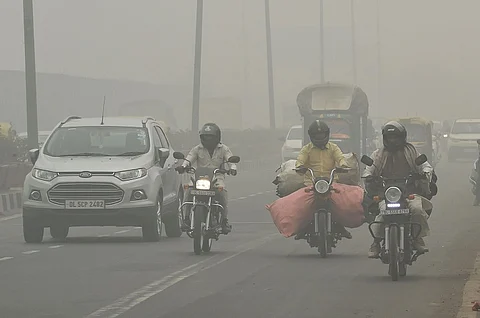

As the hazardous air quality in the national capital of Delhi continues to raise concerns, the third Odd-Even car rationing scheme has kicked off in the city from Monday, and will remain in effect till November 15. The scheme operates from 8 am to 8 pm, barring Sundays, and a violation will attract a penalty of Rs 4,000, which is double the amount charged in the earlier editions of the scheme.
"Hello Delhi! Odd Even is starting from today to reduce pollution. Do follow Odd Even for your health, your children's health and your family's breath. Share car, this will increase friendship, build relationships, save petrol and reduce pollution," Delhi Chief Minister Arvind Kejriwal tweeted on Monday. "Delhi will show it again," he added.
However, two-wheelers are exempt from the Odd-Even Scheme – a move that has drawn much criticism. Women driving alone are also exempt, as are private vehicles used for ferrying children from and to schools; vehicles used for medical emergencies, some VIPs will also not be affected by Odd-Even.
The Air Quality Index (AQI) in the Delhi stood at toxic levels on Monday, with particulate matter 2.5 (PM 2.5) reaching above 500 in many places, and even over 600 in some, like Noida which falls in the NCR region. These levels are considered “severe”, and are reportedly the highest in three years. PM 2.5 particles are those which are 2.5 micrometers or less in diameter. These are more dangerous that PM 10 particles (those that are up to 10 micrometres in diameter) as they are suspended in air, not weighed down, and can settle in lungs and the respiratory tract. According to the Indian National Ambient Air Quality Standards (NAAQS), the permissible concentration of PM 2.5 particles is 40 µg/m3 (annual average) and 60 µg/m3 (24-hour average) in industrial, residential, rural or other areas.
A public health emergency had been declared earlier in Delhi and the surrounding NCR (National Capital Region) due to the air pollution, and schools have been asked to remain shut. This deteriorated air quality affects around 40 million people living in the capital region.
Air pollution in New Delhi and surrounding towns reached the worst levels so far this year on Sunday. Aside from affecting some 40 million people living in the capital region, more than 30 flights were diverted from Delhi airport due to poor visibility https://t.co/tUov5QmyyL pic.twitter.com/reBWFEfcJI
— Reuters (@Reuters) November 3, 2019
Further, the Delhi government has also put out a health advisory asking residents to remain indoors unless absolutely necessary, and to use certified N95 masks.
Apart from the Delhi government, the Punjab and Haryana governments have also been asked to send enforcement teams to various districts in the neighbouring states to stop stubble burning which is also contributing to the horrible air quality. These enforcement teams will be patrolling seven major industrial clusters in the NCR region, and key traffic corridors, Environment Secretary KC Mishra told Indian Express.
Supreme Court takes a strong stance on stubble burning https://t.co/uf8jc2K6KU
— Atishi (@AtishiAAP) November 4, 2019
Meanwhile, construction work has also been halted in Delhi till November 5 to control dust.
Due to the significant impact on visibility due to the smog, as many as 19 flights had been cancelled till Sunday. According to reports, 37 flights from Indira Gandhi International Airport in Delhi had to be diverted, while over 250 arrivals and 300 departures faced delays till 8 pm on Sunday. The IGI Airport is India’s busiest.